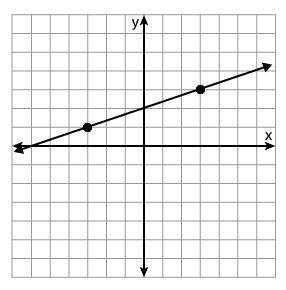
Mathematics, 03.10.2019 08:30 7letters22
When you spend $1 at the grocery store, the store doesn’t keep all of your money as profit. some of it is reinvested in the economy when the grocery store buys more merchandise from suppliers. in turn, the suppliers don’t keep all of that money as profit, either; they reinvest it in the economy when they buy more raw materials from other suppliers. the end result is that your $1 may have a larger effect on the economy. consider the following situation.
in january, a factory invests $400,000 into the economy in the form of employee salaries. during february, assume that the employees reinvest in the economy by spending 80% of their salaries. then, during march, 80% of what was spent by the employees is again reinvested in the economy by the merchants. and so on.
part a: find the amount of money that is invested during the first four months.
part b: starting with january, the amount of money that is invested in the economy forms what kind of sequence?
part c: write a rule for the amount of money that is invested during month n.
the total economic impact of the factory’s initial investment is the sum of all the investments and reinvestments over the months.
part d: what is the total economic impact after the first four months?

Answers: 1


Another question on Mathematics


Mathematics, 21.06.2019 21:00
The paint recipe also calls for 1/4 cup of food coloring. tyler says mrs.mcglashan will also need 6 cups of food coloring. do u agree or disagree? explain.
Answers: 2

Mathematics, 22.06.2019 00:00
Multiply and simplify. (x - 4) (x^2 – 5x – 6) i will mark brainliest if your answer is right. show how you got the answer. if your answer is correct but does not show how you got the answer you will not be marked brainliest.
Answers: 3

Mathematics, 22.06.2019 00:40
Afootball quarterback has two more chances to throw a touchdown before his team is forced to punt the ball. he misses the receiver on the first throw 25% of the time. when his first throw is incomplete, he misses the receiver on the second throw 15% of the time. what is the probability of not throwing the ball to a receiver on either throw?
Answers: 2
You know the right answer?
When you spend $1 at the grocery store, the store doesn’t keep all of your money as profit. some of...
Questions

Mathematics, 30.10.2020 06:30

Biology, 30.10.2020 06:30


Social Studies, 30.10.2020 06:30

Advanced Placement (AP), 30.10.2020 06:30

Mathematics, 30.10.2020 06:30


Biology, 30.10.2020 06:30


Mathematics, 30.10.2020 06:30


English, 30.10.2020 06:30





Mathematics, 30.10.2020 06:30



Mathematics, 30.10.2020 06:30




